

Autumn Speyside Whisky Festival Report and Tour in the Highlands, September 27th-October 04th, 2009
Day 3:
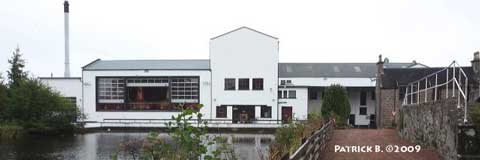 |
| Royal Brackla as seen from the "pond" |
I started my day at sunrise with a visit of the Royal Brackla distillery, where the operators were at my disposal for any questions. As for the other Bacardi distilleries, Royal Brackla is equipped with a full lauter mash tun and in terms of production, 3.6 mio litres of alcohol are produced every year. This distillery is clean and modern. At the exception of the warehouses, not much is left from the old distillery. From the stillhouse, they have a nice view over a "pond" full of ducks.
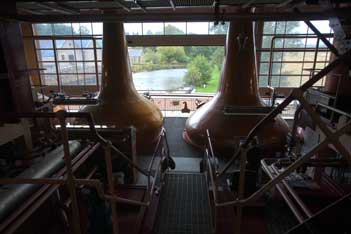 |
| View from the still house of Royal Brackla distillery |
After this pleasant start, I drove 40 miles North to Glen Ord and the distillery there. As two weeks earlier I had been told that the last visit was at 2 PM, I skipped lunch to arrive on time. Sadly, they informed me at the reception that the distillery was closed for renovation and this was their annualclosure. Apparently, the information had not been correctly provided to all the employees. I managed however to have a wee taste of the Singleton of Glen Ord, a version for the Asian market. It was smooth and mellow, but without much personality. I enjoyed the "normal" Glen Ord better.
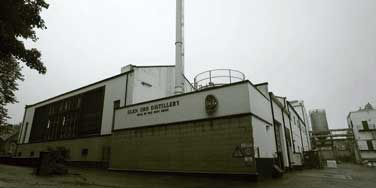 |
| Glen Ord distillery |
As I had to return to Elgin, I decided to make a short detour via Roseile to take a few outdoor photographs of the distillery. I had barely had time to park my car, take my camera and move towards the front gate to have the best angle, when a member of the distillery staff rushed in my direction to ask me if I had an authorisation. To make a long story short, the parking place that I thought to be outside the restricted area was already within the limited parameter and I was asked politely to leave the premises as soon as possible. As there is no parking place at the proximity of the distillery, do not even bother to stop there unless you have a special authorisation. Well, this was really not my day (afternoon).
 |
| A rare photograph of the new Roseile distillery |
Day 4:
The sun welcomed me at Glenburgie distillery. In company of Alex Robertson from the Chivas PR and Heritage Center, I visited the most modern distillery of Chivas. Rebuilt in 2004, it is a very modern distillery and instead of finding a cold and very industrial distillery, I was positively surprised by the inside: very bright, very spacious and very functional, with the still house, washbacks and mash tun sharing the same open space. In addition, with the big Ballantine's coat of arms, the sight is quite impressive.
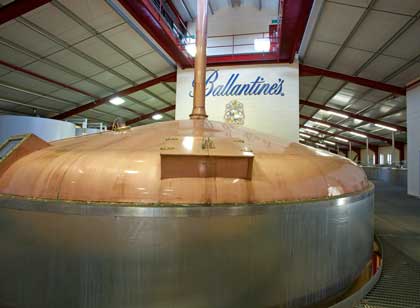 |
| Inside Glenburgie: bright, functional and with the coat of arms. A quite impressive sight. |
Glenburgie is the heart of Ballantine's, the best seller of the Chivas Group with 80 mio bottles sold every year (for comparison, Chivas is selling 55 mio bottles per year). The production of Glenburgie is 4.2 mio LPA, its maximum. At the exception of the distillation, all processes are fully automated.
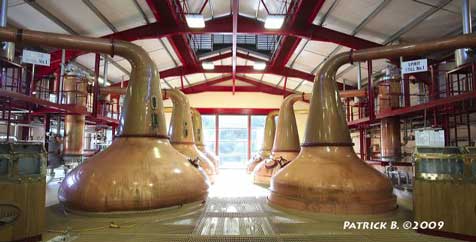 |
| The still house. |
After the tour, I was kindly invited for tasting the whole Ballantine's Range: the 17 YO is a very good and enjoyable blended whisky, with a nice peatiness, while the 21 YO was considerably smoother and only traces of peat. The 30 YO was slightly less peaty than the 17 YO, but with more pronounced sherry notes. I am not aware if it is still the case, but many casks of Ardbeg were used for Ballantine's, including the 30 YO expression.
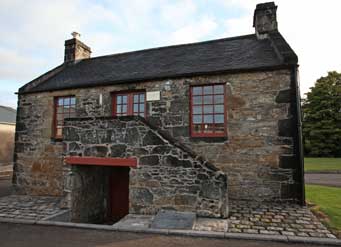 |
| The old customs house, the last remaining building of the old Glenburgie distillery. |
Our next stop was a Longmorn, one of my favourite Speyside whiskies. The distillery has kept most of its original charm, with an old steam engine still visible in the spirit still house. Although the distillery looks "old fashioned and it is equipped with a traditional tumbler rake design, the process is fully automated. Before the introduction of a heat exchanger, Longmorn was energy inefficient. Since then, the efficiency of the distillery is getting close to Glenburgie. One particularity of Longmorn is the still house, since the wash stills and spirit stills are located in different sections of the distillery.
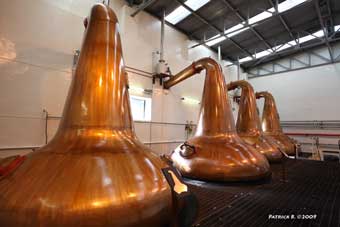 |
| The "wash stills house" at the Longmorn distillery. |
When we arrived at the still house, we were joined by Neal Corbett the young and dynamic distillery manager of Glenburgie and Longmorn. We had a most enjoyable discussion about energy efficiency, the impact of process automatisation and other technical aspects of distillation. With regrets, I had to leave them to be on time for the last tour at the Clynelish distillery.
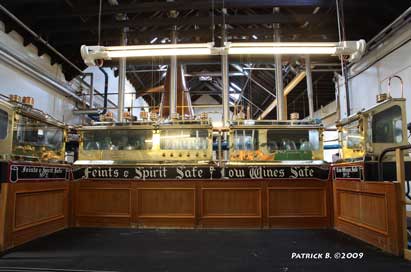 |
| The Spirit safe at Longmorn, with the spirit stills in the back. |
Well, as on the previous days, things did not really go has planned. When I arrived at the distillery, I was kindly informed that the last tour would be cancel due to special circumstances. After some discussion, the guide agreed to open the old Brora still house for me, so that I could take some pictures of the stills, the reason of my visit. The light was perfect for taking pictures, so I spent quite some time taking photographs of the old Brora distillery from all angles.
 |
| The old Brora Distillery. |
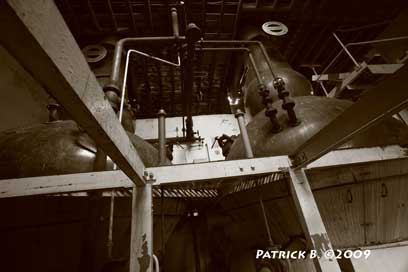 |
| The old wash and spirit still of the old Brora distillery. |